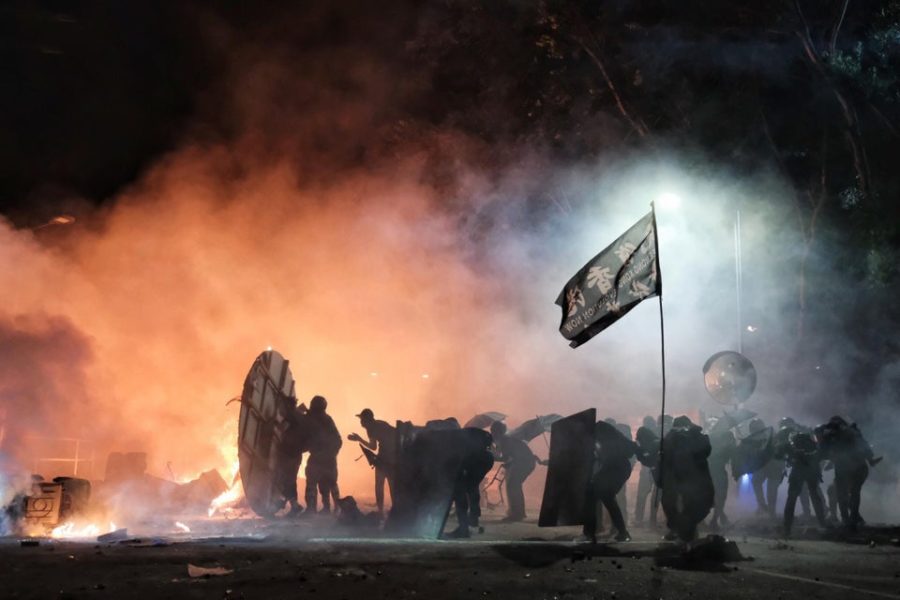Hong Kong’s Universities Become Besieged by Police
Pro-democracy protesters and students clash with riot police at the Chinese University of Hong Kong on the night of Tuesday, Nov 12. Photo Credit: Telegram
Universities in Hong Kong become the battlegrounds between pro-democracy protesters and police as clashes spread throughout the territory.
For over five months now, Hong Kong has been plagued with protests against the Hong Kong Special Administrative Government, controlled by Chief Executive Carrie Lam.
The recent escalation in violence began when the protesters called for a general strike on Monday, Nov 12. This strike was supposed to grind the transport arteries of the city to a halt during the morning rush hour.
The strike was tense until a teenage male protester was shot by a police officer in the area called Sai Wan Ho which is located on Hong Kong Island. The bullet pierced the man’s kidney and liver. He remains in the hospital with critical injuries, but is expected to survive.
Immediately, large crowds around the shooting began to shout at the police officers. The crowds were met with tear gas and pepper spray by the authorities. This set in motion a morning of demonstrations across Hong Kong, causing violence.
All of this comes as a college student at the Hong Kong University of Science and Technology (HKUST) was killed in a fall from a parking garage the week prior. The death caused many people to suspect foul play even though the Hong Kong Police Force denied any foul play.
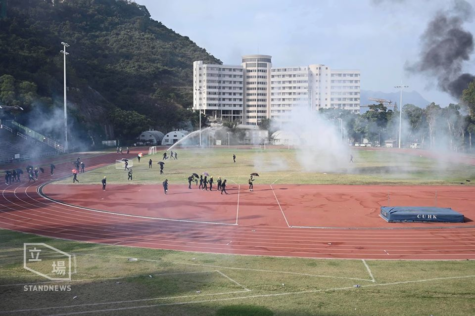
A man in the Ma On Shan area of Hong Kong was doused in gasoline and then set on fire. He had previously been in an argument with a group of protesters. Those protesters who caused the fire faced condemnation from the government of Hong Kong and the general consensus of the protest movement.
On Tuesday, Nov 12, the violence increased again. The riot police stormed the campus of the Chinese University of Hong Kong (CUHK). The situation quickly became violent with clashes breaking out between the pro-democracy protesters and the riot police.
The protesters, whom were mostly students at CUHK decided to barricade themselves on campus, blocking off most entrances into the University. The roadblocks at the university entrances were created by digging up bricks from the sidewalks and building walls and using school equipment.
The battle between the police and protesters continued through the day. At 3:00pm, the CUHK faculty agreed with the police that the students would back down on one of the elevated footbridges at the university, along with the police agreeing to step back as well.
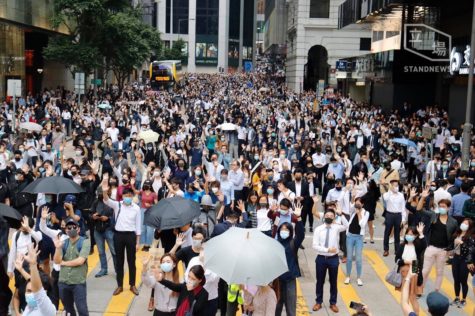
Around 15 minutes later, the police charged back at the protesters on the footbridge, while firing tear gas and rubber bullets. The clashes that ensued were some of the fiercest of the 2019 protests so far with police firing tear gas constantly for at least 15 minutes.
Some of the protesters fled the tear gas and smoke to the Sir Philip Haddon-Cave Sports Field on the campus. However, tear gas was fired at the field itself. During the chaos, both reporters and journalists were injured. One individual was hit in the eye by a tear gas canister.
Meanwhile, lunchtime protests erupted in Hong Kong’s central business and finance district. These protests consisted of white-collar workers protesting streets such as Pedder Street. The protests there caused cased traffic and transport to be in a standstill.
Police officers soon intervene and fired tear gas at the protesters. Many workers and protesters then retreated inside to luxury malls for help with injuries and help with tear gas side-effects.
CUHK was not the only university under fire on Tuesday, the students at Hong Kong University (HKU) also blockaded certain areas around campus. They also blocked a footbridge over a road and used bricks to block roads.
“I am worried about these guys. These are kids. They are my students, other people’s students, sons and daughters of families, they are kids,” said the Dean of Science and Professor of Ecology at HKU (according to Hong Kong Free Press), Matthew Evans.
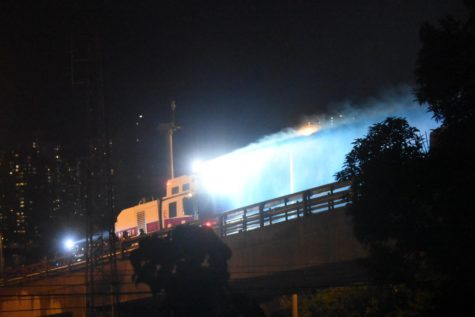
As light began to fade on Tuesday, clashes on CUHK became worse. Footbridge No.2 on campus would become a battlefield for the evening.
The protesters used Molotov cocktails and other projectiles on campus to stand their ground on the bridge. Below on Tolo Highway, a major thoroughfare in the New Territories, debris from the clashes rained down, stopping traffic.
The police later deployed one of their water cannon trucks at the protesters, this pushed them back from their positions. But, they came right back after the truck left.
The clashes continued till after 10:00pm on Tuesday. The police then retreated. However, students took turns on lookout for the police.
The barricades were also strengthened. Citizens also took food and supplies to the university to keep the students going. In all, the police fired more than 1,000 rounds of tear gas at the protesters during that
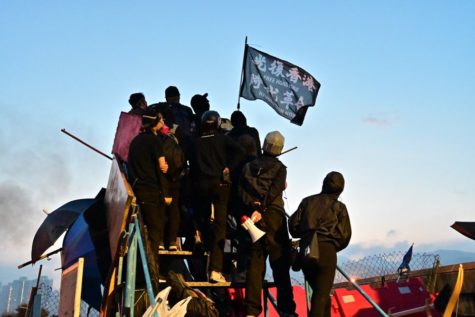
single day.
“Yesterday, the Hong Kong Police practically invaded the campus of Chinese University. They [protesters] collected a total of more than 2,300 [tear gas] cartridges today. The Hong Kong Police have become so gun-happy, so trigger-happy. And you [the Hong Kong government] say the students were very violent, they’d be throwing Molotov cocktails at the police. But you started it, you stormed our university campus, and you blame our students for resisting, [and for] for fighting back.” Claudia Mo, a member of the Hong Kong Legislative Council.
University campuses like the Hong Kong Polytechnic University, HKU, and CUHK are and have been the main locations of the clashes in the past week.. The Universities resembled situations which were prevalent during the 2014 Umbrella Movement, except for heightened tensions.
“We’re talking about allaying public resentment, anger, frustration, desperation. Can this Hong Kong government promise they would stop any more school campus invasion and stop police brutality,” said Mo.
The occupation of CUHK ended after a total of four days. Differences between the some protesters and protesters who lived on campus caused the occupation to end. Non-campus protesters moved their efforts to the Hong Kong Polytechnic University campus.
The Polytechnic University campus is more strategic because of it’s location. The campus is located in Hong Hom, Kowloon and is right next to the Cross Harbour Tunnel. The tunnel is among three tunnels which contact Hong Kong Island and the Kowloon peninsula. The tunnel is a major transport artery.
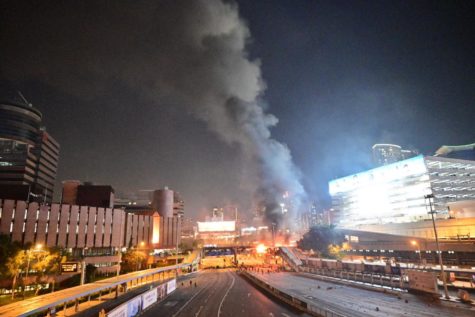
The campus quickly became fortified by the protesters to prepare for the arrival of the police. Like the activities at CUHK, the protesters barricaded the entrances to the campus. Major fortification occurred during Saturday, Nov 16.
For the first time in the protests, the soldiers of the People’s Liberation Army from the local Hong Kong Garrison barracks were activated on Saturday. The soldiers were tasked to clear roads cluttered and blocked with bricks and other items.
Smaller clashes occurred outside of the Polytechnic University during the weekend. However, the situation quickly deteriorated over the day on Sunday, Nov 17.
As he day began, some protesters threw bricks at people who were trying to move road barricades. Violent clashes then began on a pedestrian footbridge over highway tollbooths for the Cross-Harbour Tunnel.
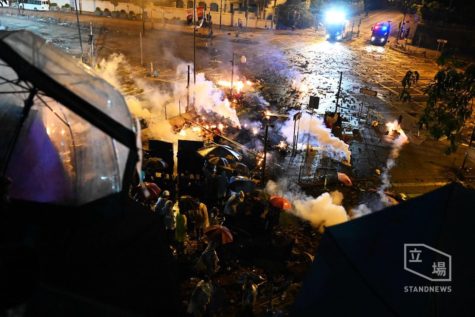
The protesters used Molotov cocktails, hammers, and other tools against the police. The police used water cannons, tear gas and other police equipment against protesters.
As the night progressed, multiple fires were set inside the campus. The police advanced to the campus and surrounded it entirely.
During the chaos, protesters set fire to an armored police van. One individual also shot a police officer with an arrow.
Around midnight, the Hong Kong Police issued a statement that they would use live ammunition if necessary on protesters. This statement and the deteriorating conditions caused some people to worry about the possibility of a so called “Tiananmen Square 2.0.”
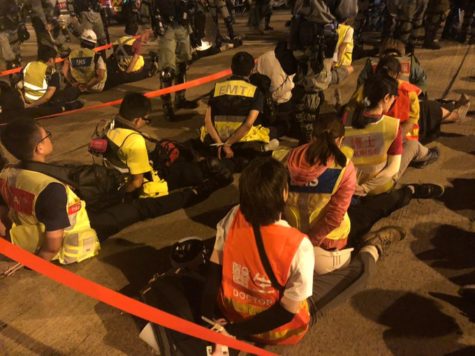
The police did not fire live rounds on the large crowds at the Polytechnic University during the night. but there were reports of three shots being fired near the Tsim Sha Tsui area in Kowloon, injuring nobody.
Protesters trying to escape the university were met with tear gas and were arrested. The police also arrested journalists, medics, and other people who are lawfully exempt from such treatment.
The police stormed the campus around 5:30am on Nov 18. During the advance, protesters threw gas bombs at the police, setting fires inside.
Around 7:00am, the University president said that he had reached an agreement with police, although some tear gas still was used at escaping students.
Throughout the day, protesters made attempts to escape the campus, but they were driven back by police. There were reports of students inside the campus whom were suffering from hypothermia and injuries inflicted from Sunday night’s clashes. However, the police did not allow any paramedics to enter until around 2:00pm.
During the day, two High Court judges decided that the anti-mask law, passed by Chief Executive Carrie Lam’s government as part of the Emergency Regulations Ordinance was quote “incompatible with the basic law.” This marks a small victory for the protesters.
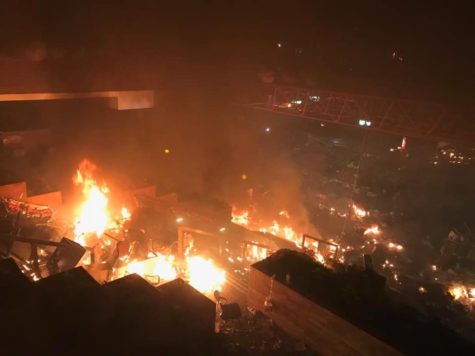
As night began to fall on Monday, Nov 18, clashes continued in areas of Tsim Sha Tsui and Kowloon proper. Many family members became frantic because they could not get to the Polytechnic campus to see their children.
The Police began to broadcast famous Cantopop ballads from people such as Leslie Cheung (who committed suicide in 2003), and other songs like auld lang syne. The police played such tunes in an effort to demoralize the remaining protesters inside.
Other clashes in Tsim Sha Tsui became more in tense as Monday became Tuesday, Nov 19. Some protesters tried to distract the police from the Polytechnic University to other areas. Nathan Road became another location during the night for protesters and police to clash in a very intense fashion.
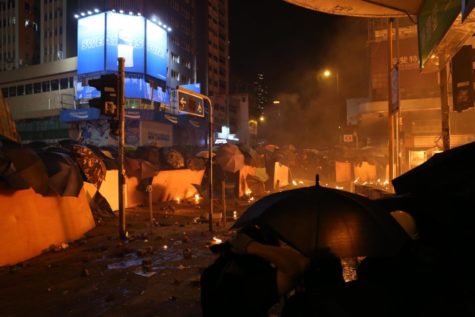
During the clashes, water cannons were used by police on the streets in order to clear some crowds. However, one of the water cannon trucks became damaged. Some people fled to the safety of a nearby church.
The situation at the Polytechnic University has become more and more dire due to the fact students are running out of food and water. Meanwhile, more and more journalists have been targeted by police.
As of Nov 20, much fewer protesters remain inside the Polytechnic University campus than there were on Sunday. This comes as many of the demonstrators have left the campus to get out of harms way. In fact, some left via the drainage pipes and by ropes from a footbridge.
According to Freedom Hong Kong, a total of 4,428 people have been arrested, with ages spanning from 11 to 83 years old. Between June 9 and Nov 15, the Hong Kong Police Force has fired 9,124+ rounds of tear gas and 14 live rounds of ammunition at protesters.
The protesters still are fighting for four out of their five demands. One of their demands have been met.
According to the guardian, the five demands are the withdrawal of the extradition bill (this one has been met), an independent inquiry into the actions of the Hong Kong Police Force, universal suffrage, and for the government to stop calling the protesters “rioters.”
With so much at stake, the protests are expected to last unless the government furthers their efforts to stop the movement.


